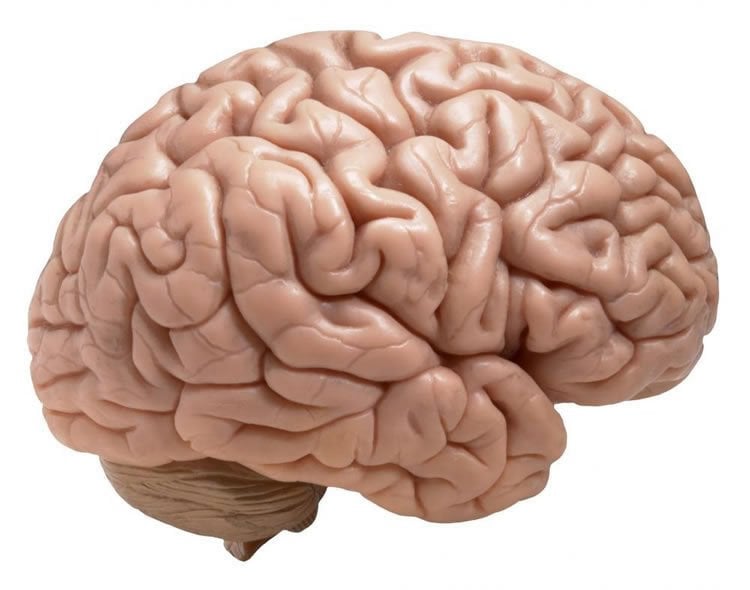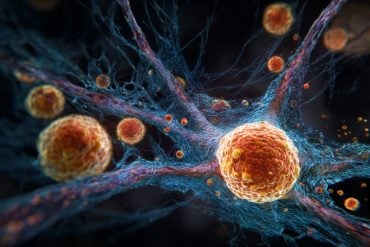Summary: A new study of pigeons reveals hemispheric dominance in the brain is caused by slight differences in temporal activity patterns.
Source: RUB.
The left and the right hemispheres specialise in different tasks. However, it has not yet been fully understood how one hemisphere assumes dominance over the other when it comes to controlling specific functions. Biopsychologists at Ruhr-Universität Bochum describe their latest findings in the journal Cell Reports, published online on 30 October 2018. Dr. Qian Xiao and Professor Onur Güntürkün have demonstrated in pigeons that the dominance is caused by slight differences in temporal activity patterns in both hemispheres.
Novel research approach
The two hemispheres are connected via thick nerve fibre bundles, so-called commissures. “In the past, it had been assumed that the dominant hemisphere transmits inhibitory signals to the other hemisphere via the commissures, thus suppressing specific functions in that region,” explains Onur Güntürkün. However, the interactions that take place between the two hemispheres are excitatory, as well as inhibitory. “This is why it has remained a mystery where, exactly, functional brain asymmetries stem from,” says Güntürkün.
In the biopsychology lab in Bochum, the researchers therefore approached this question using a new method. They had pigeons perform a colour differentiation test and extrapolated the activity of individual cells in the birds’ visuomotoric forebrain. That brain region processes information provided by the visual sense and controls motor functions based on visual input. In birds, the left hemisphere is the dominant one for these tasks.
Communication blocked
In order to analyse the influence of inter-hemispheric interaction, Xiao and Güntürkün occasionally blocked the activity of the neurons that communicate with the other hemisphere. They monitored the reactions of those neurons that usually receive input from the other hemisphere. Thus, they were able to decode the influence of the interaction between the two hemispheres.

The result is: if both brain hemispheres compete for control, the left hemisphere is able to delay the activity of neurons in the right hemisphere. “The right hemisphere simply acts too late to control the response,” describes Onur Güntürkün. The researchers demonstrated that the neurons in the left and the right hemispheres are also capable of synchronising their activity in principle.
A question of timing
“These results show that hemispheric dominance is based on a sophisticated mechanism,” concludes Onur Güntürkün. “It does not hinge on one general inhibitory or excitatory influence; rather it is caused by minute temporal delays in the activity of nerve cells in the other hemisphere.”
Funding: Funding provided by German Research Foundation.
Source: Onur Güntürkün – RUB
Publisher: Organized by NeuroscienceNews.com.
Image Source: NeuroscienceNews.com image is in the public domain.
Original Research: Open access research for “Asymmetrical Commissural Control of the Subdominant Hemisphere in Pigeons” by Qian Xiao and Onur Güntürkün in Cell Reports. Published October 30 2018.
dio:10.1016/j.celrep.2018.10.011
[cbtabs][cbtab title=”MLA”]RUB”The Reason For Hemispheric Dominance in the Brain.” NeuroscienceNews. NeuroscienceNews, 2 November 2018.
<https://neurosciencenews.com/hemispheric-dominance-10150/>.[/cbtab][cbtab title=”APA”]RUB(2018, November 2). The Reason For Hemispheric Dominance in the Brain. NeuroscienceNews. Retrieved November 2, 2018 from https://neurosciencenews.com/hemispheric-dominance-10150/[/cbtab][cbtab title=”Chicago”]RUB”The Reason For Hemispheric Dominance in the Brain.” https://neurosciencenews.com/hemispheric-dominance-10150/ (accessed November 2, 2018).[/cbtab][/cbtabs]
Abstract
Asymmetrical Commissural Control of the Subdominant Hemisphere in Pigeons
Functional brain asymmetries depend both on hemisphere-specific factors and lateralized commissural interactions, but their detailed neural mechanisms are mostly unknown. Because birds are visually lateralized, we tested pigeons monocularly in a color discrimination task while recording from single visuomotor forebrain neuron. All birds learned faster and responded quickly with the right eye and left hemisphere. This asymmetry depended on three factors. First, Go-stimulus onset resulted in a higher left hemispheric proportion of excited relative to inhibited neurons such that, second, left-sided visuomotor neurons could trigger the animal’s response faster. Third, the left hemisphere was able to adjust the timing of individual activity patterns of right hemispheric neurons via asymmetrical commissural interactions, such that the right hemisphere came too late to control the response. These results imply that hemispheric dominance in birds is realized by both lateralized activation of forebrain motor areas and shifts of the contralateral spike time.






